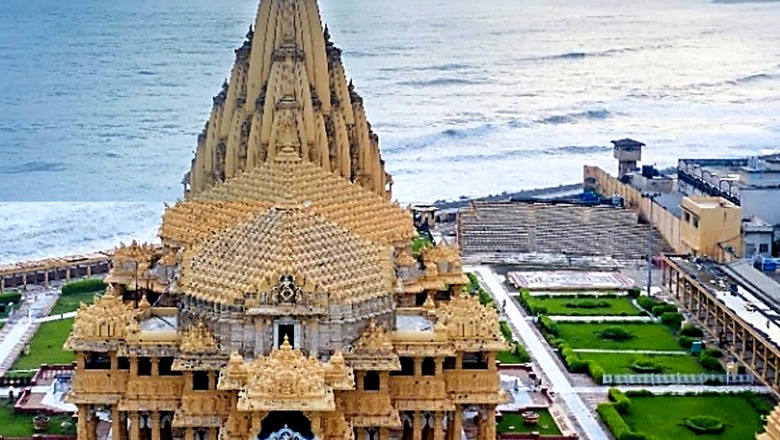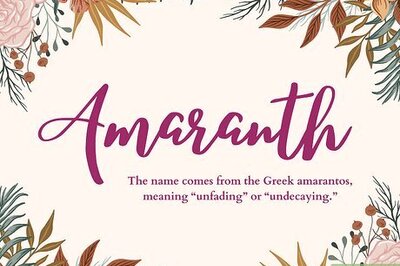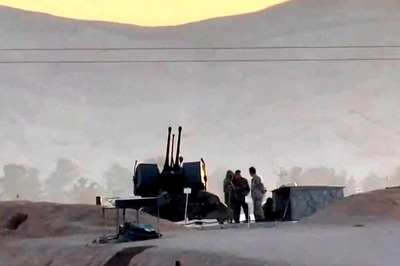
views
English novelist George Orwell had mentioned in his book ‘Nineteen Eighty-Four’ that “who controls the past controls the future: who controls the present controls the past.” This could not have been more germane than in the legacy wars and live battlefield that Indian historiography routinely becomes.
At a reputed conclave in the national capital recently, and the social media tizzy that followed, I encountered this very contestation and sharp polarisation of views that come into play each time we talk about the long, tempestuous history of our country. While we might have become politically independent, our minds are still perhaps not entirely decolonised and we faithfully inherit the colonial biases and narratives into the manner in which we narrate our own civilisation’s story. To compound matters further, since Independence, the hegemonic stranglehold of an individual ideology over academic historiography has sought to throttle every dissenting viewpoint by imputing political motives or personal slander. Anchored mainly in Marxist historiography and leftist ideology, with a few borrowings from postmodernism, the Annales School, Subaltern and other studies, this new school, which may be called Leftist for want of a better term, has become synonymous with a number of abusive, unethical and unscholarly practices.
An Indian child’s first brush with the story of her country is through her textbooks where she is introduced to the history of her own country as though she is being told the story of some other land. While the job of history or historians is not merely to generate pride or jingoism, it is also not to denigrate our own culture and past, to be perennially apologetic about it and feel a spectacular disconnect from our roots, which is unparalleled in any country of the world. Negation of India’s civilisational greatness becomes a fashion statement.
Sir John Strachey, a British administrator in-charge of training the Imperial Civil Service newbies is infamous for his declaration in the 1880s that, “The first and most important thing to learn about India is that there is not and never was an India.” Quite sadly, a lot of educated Indians too subconsciously believe that there was no India before the British colonised and civilised us, and gave us their beneficence of railways, civil services and English education. In a recent discussion with an “eminent historian”, I was stunned to hear that it was in the Persian language (thanks to Amir Khusro) that the first ever eulogy to the Motherland was ever written and all of Sanskrit literature is bereft of any acknowledgment of India.
While a nation state is defined by codified laws and well-marked territories, a nation is a shared sense of emotional belonging to a common territorial and cultural entity. Right from the millennia-old invocation in traditional Hindu rituals invoking the spatial sacred geography as “Bharata Khanda” in “Bharata Varsha” and “Jambudwipa” there are countless references to this shared emotional belonging in the epics, the Ramayana, Mahabharata and the Puranas — collectively termed as Itihasa. The Vishnu Purana whose date of composition is contested from 400-300 BCE to even ninth century states evocatively: “The country north of the sea and south of the Himalayas is Bharata and her children are Bharati. It spans over a thousand yojanas from north to south. It has kiratas (reference to the people of Assam) in the east and yavanas (the Indo-Greeks in Greater Punjab) in the west.” What more explicit definition could there be of an Indian “nation”?
The testimonies of Xuazang, the Chinese Buddhist pilgrim of the 7th century calling the land he was visiting as ‘Indu’; the stringing together of the four frontiers by philosopher Adi Shankara in the 8th century by establishing his peethams at the four cardinal directions of Sringeri, Puri, Dwarka and Badrinath; the scattering of the 51 shaktipeethas across the sacred geography of the nation or the pan-India pilgrimages that our ancestors undertook are but a few examples that point to the antiquity of a common civilizational memory that predates British colonialism or even the birth of the Indian constitution in 1950.
But instead of viewing this civilisational continuity of India, especially of the Hindu, Buddhist, Jain and Sikh traditions that emanated here, Leftist historiography denies these and sets up conflicts between them, most often with little or no evidence. Along with this, there is a near-complete erasure of India’s traditional knowledge systems in every field — philosophical, linguistic, literary, scientific, medical, technological or artistic — and a general underemphasis of India’s important contributions to other cultures and civilisations, as a faithful inheritor of colonial historiography. While we faithfully memorise Shakespeare and Yeats, works of Kalidasa, Annamacharya, Sankaradeva or Thiruvalluvar in original or translations do not form part of our syllabi.
The story of India is told as that of her invaders and from their perspective and we have never reclaimed it. So it appears like a laundry list of invasions from the myth of the Aryan Invasion Theory that has been debunked by genetic and archaeological discoveries, to battles that we kept losing, with little emphasis on the resistance we put or the battles we won. Thus the heroic victories of Lalitaditya Muktapida, Naiki Devi, Suheldev, Rajendra Chola, Rudrama Devi, Bappa Rawal, Dahar, Rana Kumbha, Abbakka, Lachit Borphukan, Marthanda Varma, Velu Nachiyar, Durgawati, Chand Bibi, Hazrat Mahal and numerous others seldom ring a bell for many a young Indians. The history of India also seems like a history of Delhi with the most obscure and bigoted dynasties getting incommensurate coverage as against the stories from vast swathes of India, especially the South and North East. The Empires of Vijayanagara or Cholas, Rashtrakutas, Satavahanas, Pallavas, Chalukyas, Wodeyars, Travancore, Ahoms, Twipras, Manipuris and several dynasties and peoples make cursory or very little presence when compared to their importance in India’s civilizational history. India needs to reclaim her story back from Delhi.
Popular Indian historiography also refuses to acknowledge or negates the darker periods of Indian history especially the Islamic conquests, even as contemporary records of court historians gloat on largescale Hindu genocides and destruction of temples and universities. Even at the heights of Mughal glory, while India’s GDP share percentage in world economy did not diminish as the wealth remained within the country, the GDP per capita growth plummeted negative all throughout their reign as recorded by economist Angus Maddison.
American historian Will Durant had called the Islamic conquest of India as the bloodiest story in human history. Yet, these are conveniently underplayed under a false belief that stating these truths would lead to demonising today’s Indian Muslims, who are in no way answerable to the cruelties of barbarians such as Mahmud Ghazni, Mohammad Ghori, Aurangzeb or Tipu Sultan. Being anti-invaders is not being anti-Islam. The more one sides with tyrants, the more damage one brings to the Islamic faith itself. It is not about vengeance, or of reawakening old ghosts, but of not repeating the same mistakes. Secular, democratic India must know the truth and make peace with it and move on. After all, the edifice of national unity or social cohesion cannot rest on the false and shaky foundations of whitewashed history. Doing so is an intellectual crime because it subordinates the truth to political compulsions.
If the idea is not to risk communalising the majority psyche, it should not be difficult to differentiate between Muslims as a society and Islamism as a doctrine, with ample examples such as Raheem, Ras Khan, Dara Shukoh, Shishunala Shareefa, and APJ Abdul Kalam that are rich in our history. After all, school students in Germany and USA read extensively about the Holocaust and Civil War. Concealing the record of Islamist sectarianism has only helped inflaming it. Unsurprisingly, demands like communal reservation and aversion to ‘Vande Mataram’, which were central to Muslim League’s “grievances” and formed their justification for Partition, are routinely mainstream. The secessionist movement in the Kashmir valley with all its Islamist attributes has found support, in pockets of universities and academia.
Finally, we are presented a very linear and simplistic narrative of the Indian freedom struggle dominated by a single ideological stance that vastly underplays the phenomenal influence of armed resistance and the role of revolutionaries right from the 1857 War of Independence to eventually the heroics of Netaji Subhas Chandra Bose’s Indian National Army and the Naval Mutiny of 1946 that actually brought India her freedom. In the 75th year of our Independence, a dispassionate assessment of these multiple strands and protagonists of our epic struggle for liberation is vital.
A quote attributed to Voltaire states that history is the lie commonly agreed upon! Sadly, in the case of India’s long and fractured past, consensus and common agreement on even this lie eludes us.
Dr Vikram Sampath is historian, author and Fellow of the Royal Historical Society. The views expressed in this article are those of the author and do not represent the stand of this publication.
Read all the Latest News , Breaking News and IPL 2022 Live Updates here.


















Comments
0 comment